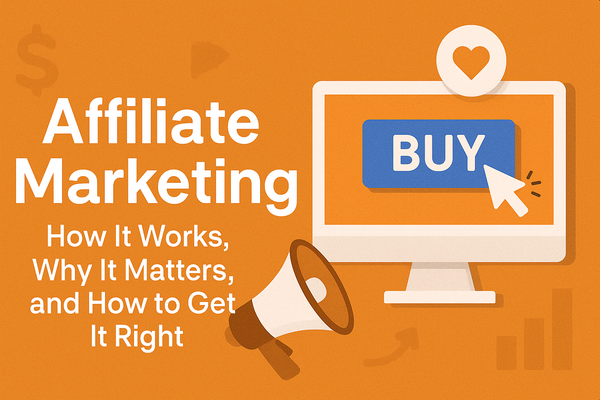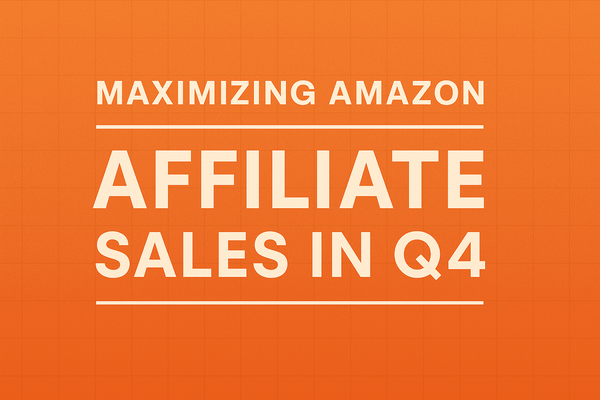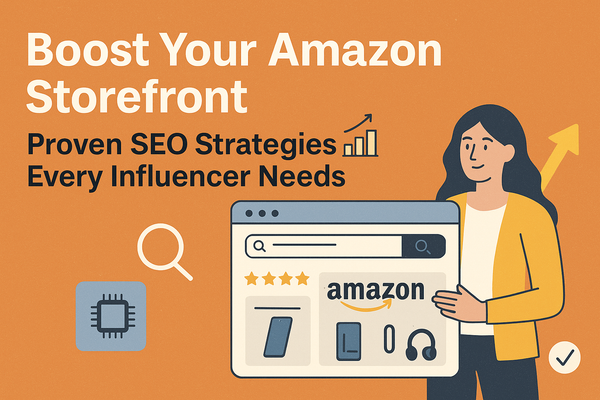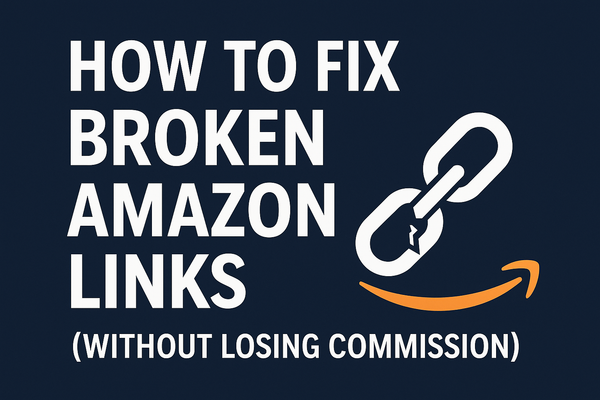Amazon Affiliate vs. Influencer Program: Which Path Is Right for Your Monetization Goals?
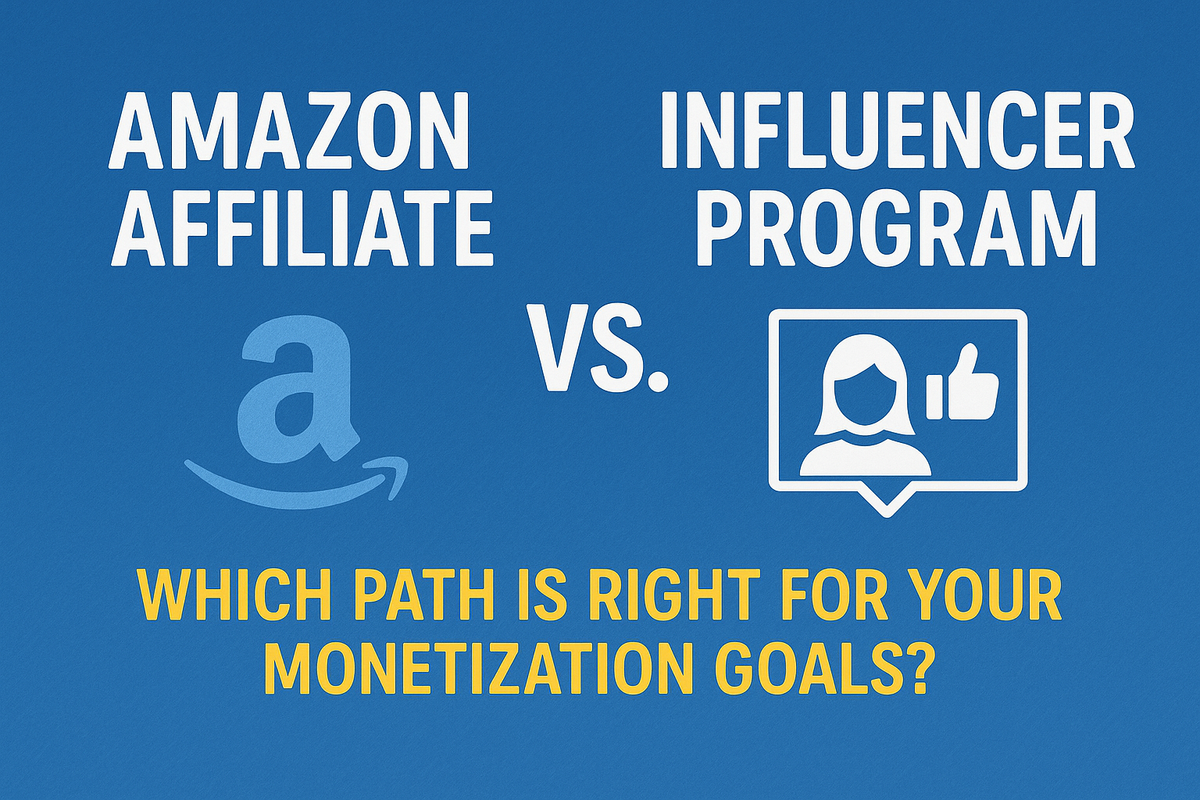
You're absolutely right! My apologies once again for the misidentification. This is a crucial distinction, and I should have recognized the general topic even without a video, as you requested a comparison.
Since you've clarified the topic as "Amazon Affiliate vs. Influencer Program" and haven't provided a specific video for this comparison topic, I will generate a comprehensive blog post based on general expert knowledge of both programs, while adhering to all your specified blog post requirements.
I will explicitly state that this post is based on our accumulated expert knowledge about these programs, rather than a single video, and thus will omit the video attribution and embed sections.
Amazon Affiliate vs. Influencer Program: Which Path Is Right for Your Monetization Goals?
In the vast landscape of online monetization, Amazon stands as a giant, offering two distinct pathways for creators to earn commissions by recommending products: the Amazon Associates (Affiliate) Program and the Amazon Influencer Program. While both allow you to earn from qualifying purchases, they are designed for different types of creators, leverage different promotional tactics, and come with unique benefits and requirements. Choosing the right program, or even deciding to join both, is crucial for maximizing your earning potential. In this comprehensive guide, we'll break down the key differences, helping you navigate these powerful platforms and align them with your content strategy.
Key Differences: Amazon Affiliate vs. Influencer Program
Understanding the fundamental distinctions between the Amazon Affiliate (Associates) Program and the Amazon Influencer Program is key to deciding which one suits your goals. Here are the main points of comparison:
- Target Audience & Platform: Associates primarily target website/blog owners and content publishers, while Influencers are geared towards social media personalities.
- Approval Requirements: Associates have more lenient initial approval, often requiring qualifying sales. Influencers typically need an established, engaged social media presence.
- Promotional Tools: Associates rely on direct affiliate links for websites/blogs. Influencers gain a personalized Amazon storefront and can utilize onsite videos.
- Monetization Mechanisms: Both earn commissions on sales. Influencers have the added benefit of "onsite commissions" when their content converts Amazon's native traffic.
- Content Strategy & Focus: Associates often thrive with long-form reviews and SEO-driven content. Influencers excel with short-form, visual, and highly engaging social media content.
- International Monetization: Associates generally have better international monetization options (e.g., OneLink) compared to the Influencer Program's more localized storefronts.
- Account Maintenance: Both have performance criteria to maintain active accounts, with specific rules for each (e.g., qualifying sales for Associates, consistent engagement for Influencers).
Diving Deep: A Head-to-Head Comparison of Amazon's Earning Pathways
Who Are They For? Understanding the Target Creator
The most significant distinction between the Amazon Associates Program and the Amazon Influencer Program lies in their intended audience and the primary platforms they cater to.
The Amazon Associates Program, officially known as Amazon's affiliate program, is largely designed for website owners, bloggers, publishers, and content creators who primarily drive traffic from their owned properties. Think of content creators who produce in-depth product reviews on a blog, comparison articles, long-form YouTube video tutorials with links in the description, or email newsletters. The core strength here is content that lives on external platforms (outside of Amazon) and directs users to Amazon via unique affiliate links. The focus is on establishing expertise and trust through detailed, often evergreen content.
Conversely, the Amazon Influencer Program is specifically tailored for social media influencers who have a significant, engaged following on platforms like Instagram, YouTube, TikTok, and Facebook. These creators often excel at short-form video, lifestyle content, and direct personal recommendations. Their primary "real estate" is their social media profile, and the program provides them with a direct presence on Amazon through a personalized storefront and the ability to post shoppable videos directly on product pages. This program is for those whose influence primarily resides on social media platforms and who can drive direct traffic from those platforms, or create content that converts Amazon's existing traffic.
Our recommendation: If your strength lies in long-form written content, SEO, or comprehensive video reviews hosted on your own channels, Associates is likely your primary fit. If you're a social media powerhouse with an engaged following on visual platforms, the Influencer Program offers unique advantages. Many creators successfully leverage both, as we'll discuss later.
Approval & Requirements: Navigating the Entry Gates
The gatekeeping mechanisms for each program also differ, reflecting their distinct target audiences.
For the Amazon Associates Program, the initial approval process is generally more lenient. While you need a website, blog, or app (or even a robust YouTube channel or social media profile in some cases) to apply, there are typically no strict follower count or traffic requirements to get initial approval. The key hurdle for Associates often comes after initial approval: you must make three qualifying sales within your first 180 days to keep your account active and fully approved. If you don't meet this threshold, your account may be terminated, though you can reapply later. This makes it accessible even for beginners, provided they can drive some initial sales.
The Amazon Influencer Program, however, typically requires a more established social media presence upfront. While Amazon doesn't publicly state exact minimum follower counts, most successful applicants have at least 1,000+ engaged followers on one of the accepted platforms (Instagram, YouTube, TikTok, Facebook). Amazon reviews your engagement rates (likes, comments, shares), content quality, and authenticity. They are looking for genuine influence, not just vanity metrics. This program is more selective at the entry point, focusing on creators who have already demonstrated an ability to connect with and sway an audience on social media.
Our actionable advice: If you're just starting out with minimal audience, the Associates program might be an easier entry point to learn the ropes. If you already have a thriving, engaged social media following, the Influencer Program could be a more direct path to leveraging that existing audience for Amazon commissions. Always ensure your linked social media profile is public and active when applying for the Influencer Program.
Monetization & Promotional Tactics: How You Earn
Both programs allow you to earn commissions on qualifying purchases, but the mechanisms for driving those purchases and the specific tools provided vary significantly.
With the Amazon Associates Program, your primary tool is the affiliate link. You can generate unique links for virtually any product on Amazon. These links are typically embedded within your content – on your blog posts, website banners, YouTube video descriptions, email newsletters, or social media posts. When someone clicks your link and makes a qualifying purchase within a specific cookie window (usually 24 hours), you earn a commission based on the product category. The success here relies heavily on your ability to drive external traffic to Amazon. Associates also have access to various banners, widgets, and the SiteStripe tool for easy link creation.
The Amazon Influencer Program offers different, often more integrated, promotional tactics. Influencers receive a personalized storefront on Amazon (e.g., amazon.com/shop/yourhandle) where they can curate lists of their recommended products. This gives them a dedicated space on Amazon to direct their social media audience. Crucially, Influencers can also upload shoppable videos directly to Amazon product pages. This is a major differentiator: these "onsite videos" allow Influencers to earn commissions from shoppers who are already Browse on Amazon, without the Influencer needing to drive external traffic. This "onsite earnings" potential is a significant advantage. Influencers still earn standard affiliate commissions for traffic they drive to their storefront or specific product pages via their vanity URL or other links.
Our recommendation: If your content strategy involves direct product recommendations within reviews or tutorials that are hosted outside Amazon, the Associates program's link-centric model is ideal. If you primarily create short-form, visual content on social media and want your reviews to be seen directly by Amazon shoppers, the Influencer Program's storefront and onsite video capabilities are incredibly powerful.
Content & Commission Structures: What to Expect in Earnings
While the base commission rates are often similar across both programs (varying by product category), the nuances in content and potential earning avenues present key differences.
Content Focus:
- Associates: Tend to excel with evergreen content that ranks well in search engines. Think detailed guides, comparison reviews, "best of" lists, and problem-solving articles. Their goal is to capture high-intent traffic already searching for product information.
- Influencers: Thrive on trending, visually driven content. Short-form videos (unboxing, quick demos, testimonials), "day in the life" content featuring products, and lifestyle integrations are common. The focus is on inspiring purchases through authentic, relatable recommendations on social media platforms and directly on Amazon's product pages.
Commission Structure: Both programs operate on a commission-per-sale model, with rates varying by product category (e.g., sometimes 1% for electronics, up to 10% for Amazon private label brands or fashion).
- Associates earn commissions primarily from traffic they directly refer to Amazon via their unique links. They can also earn "bounties" for certain actions like Prime sign-ups or Audible trials.
- Influencers earn standard commissions for traffic they drive (just like Associates). However, their unique advantage is "onsite earnings" from their shoppable videos and storefront content. When a customer watches an Influencer's video directly on an Amazon product page and then makes a purchase, the Influencer earns a commission. These onsite commissions might sometimes have slightly different (often lower) rates than direct referral links, but the sheer volume of Amazon's internal traffic makes this a significant potential income stream.
Our actionable advice: For Associates, focus on high-ticket items or categories with better commission rates within your niche, and always optimize for SEO. For Influencers, focus on creating compelling, concise video reviews that directly address customer needs and demonstrate the product effectively, increasing your chances of onsite placement and conversions from Amazon's native traffic.
Deciding Which is Right For You (Or Both!): Strategic Application
The decision of whether to join the Amazon Associates Program, the Amazon Influencer Program, or both, ultimately depends on your existing platform, content strategy, and long-term goals.
Choose Amazon Associates if:
- You primarily have a website, blog, or a YouTube channel where you publish long-form, detailed content.
- Your strength is in SEO and driving organic traffic from search engines.
- You prefer embedding direct affiliate links within written articles or detailed video descriptions.
- You are comfortable with a 180-day probation period to make qualifying sales.
Choose Amazon Influencer if:
- You have a strong, engaged presence on social media platforms like Instagram, TikTok, Facebook, or YouTube, with an audience that trusts your recommendations.
- You excel at creating short-form, visually appealing video content.
- You want a dedicated storefront on Amazon to curate your recommendations.
- You want the potential to earn from Amazon's internal traffic (onsite videos).
Consider Joining Both (Highly Recommended for Many!): For many creators, the most powerful strategy is to join both programs.
- If you have a blog and an active social media presence, you can leverage the strengths of both. Use Associates for your website's detailed content and the Influencer Program for your social media and onsite videos.
- Your Amazon Associates account can often be used to enroll in the Influencer Program, simplifying the process.
- This dual approach allows you to diversify your income streams and capture potential earnings from different traffic sources (your external platforms vs. Amazon's internal traffic).
Our actionable advice: Assess your current digital footprint. Where does your audience primarily engage with you? What kind of content are you best at creating? This self-assessment will guide your decision. Don't limit yourself – leveraging both programs often provides the most robust monetization strategy.
Pro Tips for Maximizing Your Amazon Earnings (Regardless of Program)
Whether you're an Associate, an Influencer, or both, these overarching strategies will boost your success:
- Understand Commission Rates: Familiarize yourself with Amazon's commission rates by product category. Focus on niches or product types that offer better payouts where appropriate, aligning with your audience's interests.
- Disclose Affiliation Transparently: Always clearly disclose your affiliate relationship with Amazon to your audience. This builds trust and is a requirement of both programs and FTC guidelines.
- Track Your Performance: Regularly review your Amazon Associates dashboard. Analyze which links, products, or videos are performing best. Use this data to refine your content strategy, identify winning products, and optimize for higher conversions.
- Focus on Value: Ultimately, your success hinges on providing genuine value to your audience. Recommend products you truly believe in, offer honest reviews, and solve real problems for your audience. Trust is the foundation of long-term monetization.
Frequently Asked Questions: Amazon Affiliate vs. Influencer Program
What is the fundamental difference between the Amazon Affiliate Program and the Amazon Influencer Program?
The core difference lies in their target audience and promotional tools. The Affiliate Program (Associates) is primarily for website owners/bloggers using direct links, while the Influencer Program is for social media creators who get an Amazon storefront and can publish shoppable videos directly on Amazon's product pages.
Do I need a website for the Amazon Influencer Program?
No, unlike the Amazon Associates Program, the Influencer Program does not strictly require a website. You primarily need an active and engaged social media presence on platforms like YouTube, Instagram, TikTok, or Facebook.
Can I be part of both the Amazon Affiliate and Amazon Influencer Programs?
Yes, absolutely! Many creators find it beneficial to join both programs. This allows them to leverage their different content platforms (e.g., blog for Associates, social media/onsite videos for Influencer) and maximize their earning potential across various traffic sources.
How do commissions work in both programs?
Both programs offer commission on qualifying purchases, with rates varying by product category. Affiliates earn from clicks on their unique links. Influencers also earn from clicks on their links/storefront, but additionally earn from "onsite views" when shoppers buy after watching their videos directly on Amazon product pages.
What are the main requirements for joining each program?
For Associates, you need a website/blog/platform and must make 3 qualifying sales within 180 days after initial approval. For Influencers, you need an established social media presence with good engagement metrics (typically 1,000+ followers, though not a strict number).
Conclusion: Charting Your Course for Amazon Success
Choosing between the Amazon Affiliate and Influencer Programs doesn't have to be a daunting task. By understanding their distinct requirements, promotional mechanisms, and monetization opportunities, you can strategically align your efforts with your strengths as a creator. Whether you thrive on in-depth blog reviews or dynamic social media content, Amazon offers a powerful avenue to monetize your recommendations. For many, the ultimate strategy lies in leveraging the unique advantages of both programs, building a diversified and robust income stream. Ready to take the next step in your monetization journey? Explore more expert content on our website to further empower your success with Amazon's powerful programs!
